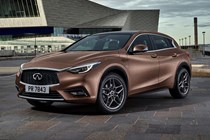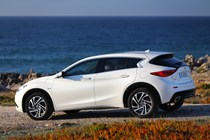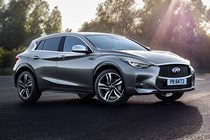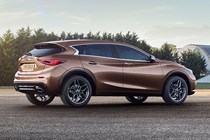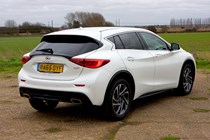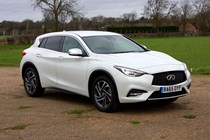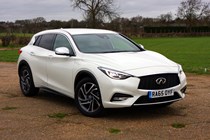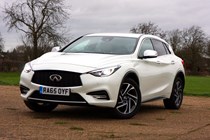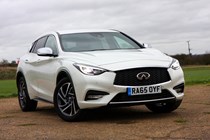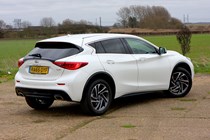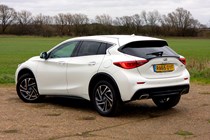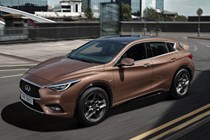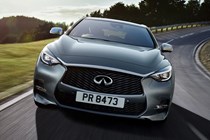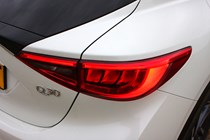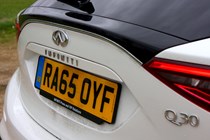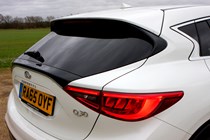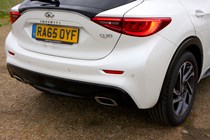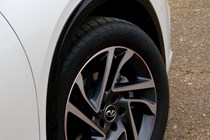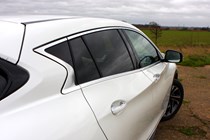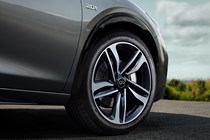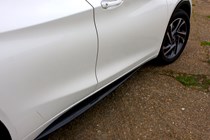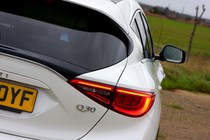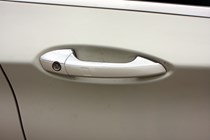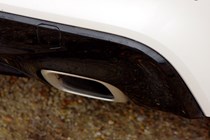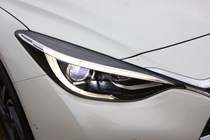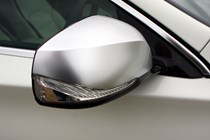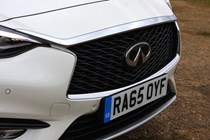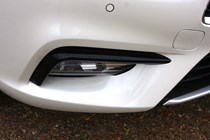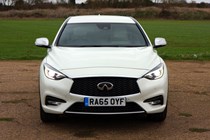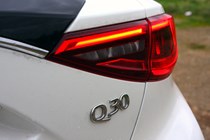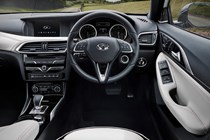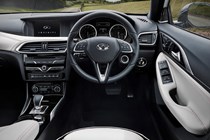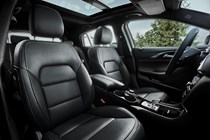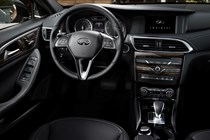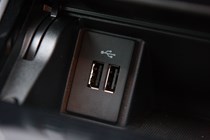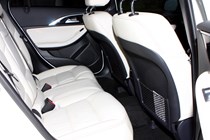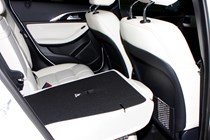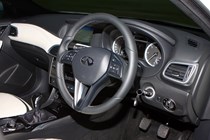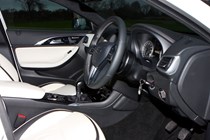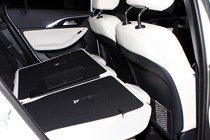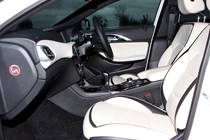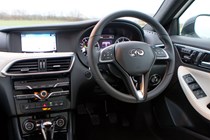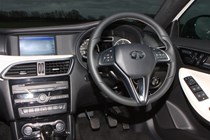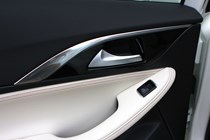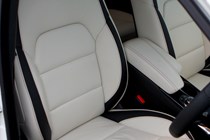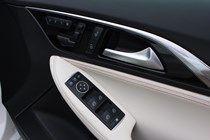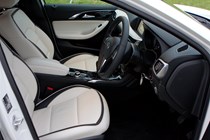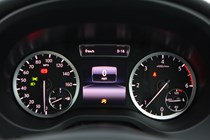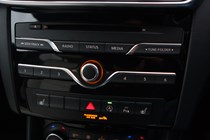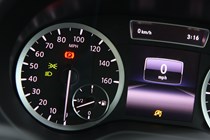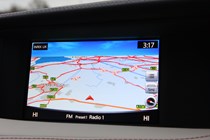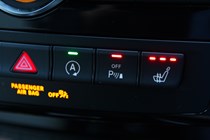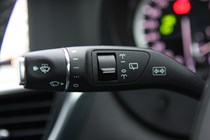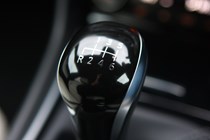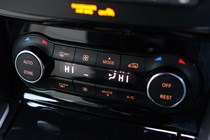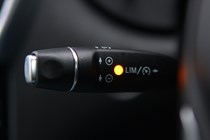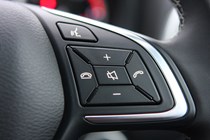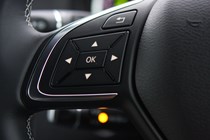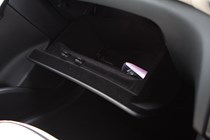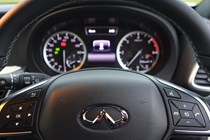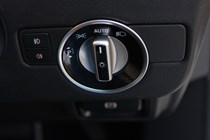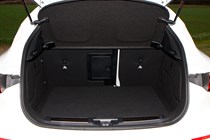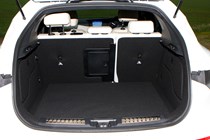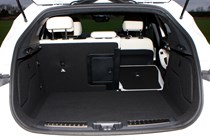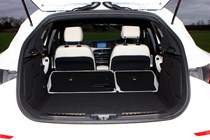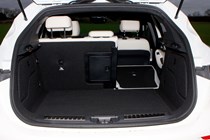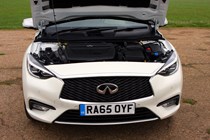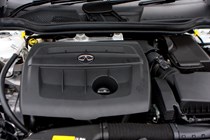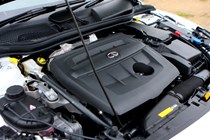
Infiniti Q30 Hatchback (2015-2020) engines, drive and performance

- Two petrols, two diesels
- Manual or automatic gearboxes
- Our favourite is 1.5 diesel
There are four engines on offer – one pair each of diesels and petrols – but we reckon the vast majority of sales will be of the former. The petrol engines aren’t as efficient and don’t drive particularly well, so there’s little reason to bother with them.
There’s the choice of a six-speed manual gearbox for the smaller of both engine types, while a seven-speed twin-clutch automatic takes care of higher-spec powerplants.
Diesel best for Infiniti Q30 performance
To date we’ve driven three of the four, and our favourite is the 1.5-litre diesel. It’s on offer here with 108bhp and 260Nm of torque, covering 0-62mph in 12 seconds flat. Not only does this engine make the most sense in terms of running costs, it’s the smoothest and most refined too. We tried it with the six-speed manual gearbox, which works precisely like its Mercedes-Benz counterpart.
We found it a little fiddly to switch between forward and reverse gears because of the operation between first and reverse, where you have to lift the gear lever and pull down towards where second gear normally is. This seems to jar with us, and made from some confusion in car parks. It’ll take a bit of getting used to.
The other diesel engine isn’t as impressive. It’s the old 2.1-litre Mercedes-Benz unit which the firm widely uses, but is about to replace. It’s a good job too, because it’s starting to feel its age now. It’s noisy – even with the clever noise-cancelling technology exclusively installed for this engine.
This system employs the Hi-Fi to play noise at a frequency that cancels out some of the din, meaning the cabin is quieter. It can’t handle eager acceleration, though. Call upon the full 350Nm of torque (covering 0-62mph in 8.3 seconds with all-wheel drive installed) and there’s a grumble from the engine that simply makes the car feel old-fashioned; especially considering its space-age looks.
We did like the seven-speed automatic gearbox with this engine more than the manual with the smaller diesel, though. We suspect our ultimate powertrain would involve the 1.5 coupled to an automatic gearbox.
Petrol engines mean poor performance
Considering the 2-litre turbocharged petrol engine is only available on Q30 Sport models, it’s not a particularly interesting or inspiring engine. Sure, it’s got a fairly wide powerband and will propel the car from 0-62mph in 7.2 seconds, but it sounds flat.
You can only have the seven-speed automatic with this engine, and while changes are smooth and quick, there’s always a delay in metering out the 350Nm and 208bhp, even in its ‘sport’ mode. Using the paddles behind the steering wheel to change gears doesn’t help very much either, and when you really start to press on the Q30 begins to sound like it’s straining and stressed rather than sporty.
- Taller set-up than normal hatchbacks
- Less sporty, more comfortable
- Great steering and brakes
Infiniti has gone to great lengths to build a suspension system which works well on the Q30, and strangely ended up offering two set-ups rather than one that works. You can also have two- or all-wheel drive on most powertrains, though we’ve yet to try the car off-road or even on a poor surface to really discover if sending some power to the rear wheels too actually works.
You can pick between the Premium chassis or the Sport chassis, with the latter 15mm lower and seven percent stiffer than the former. We drove the two, and while both are accomplished, neither is going to make you feel like you’re going to corner like a racing driver.
Steer clear of Sport chassis
That’s not really what this car is about, and ride comfort takes precedence over cornering speed. For that reason we can’t really see the point of the Sport set-up, which does feel a fraction flatter but at the expense of some comfort – especially over expansion joints or other sharp lumps, which bang through the chassis with some volume.
Instead, we’d suggest you take advantage of the more compliant Premium chassis, which is comfier than anything in the Mercedes-Benz A-Class stable. It’s something many companies – especially at the premium end of the market – really struggle with. Infiniti’s engineers developed the Q30 for the UK, and tested 50 configurations to find the best balance.
Composed handling for Infiniti Q30
Still, there isn’t an undue amount of bodyroll evident, it settles down quickly over poor surfaces and the Q30 feels assured at all speeds. We applaud the firm for its steering and brakes; both of which are surprisingly responsive and offer a good level of feedback to the driver. It’s clear a lot of work has gone into both systems and they’ll suit UK car buyers well.




